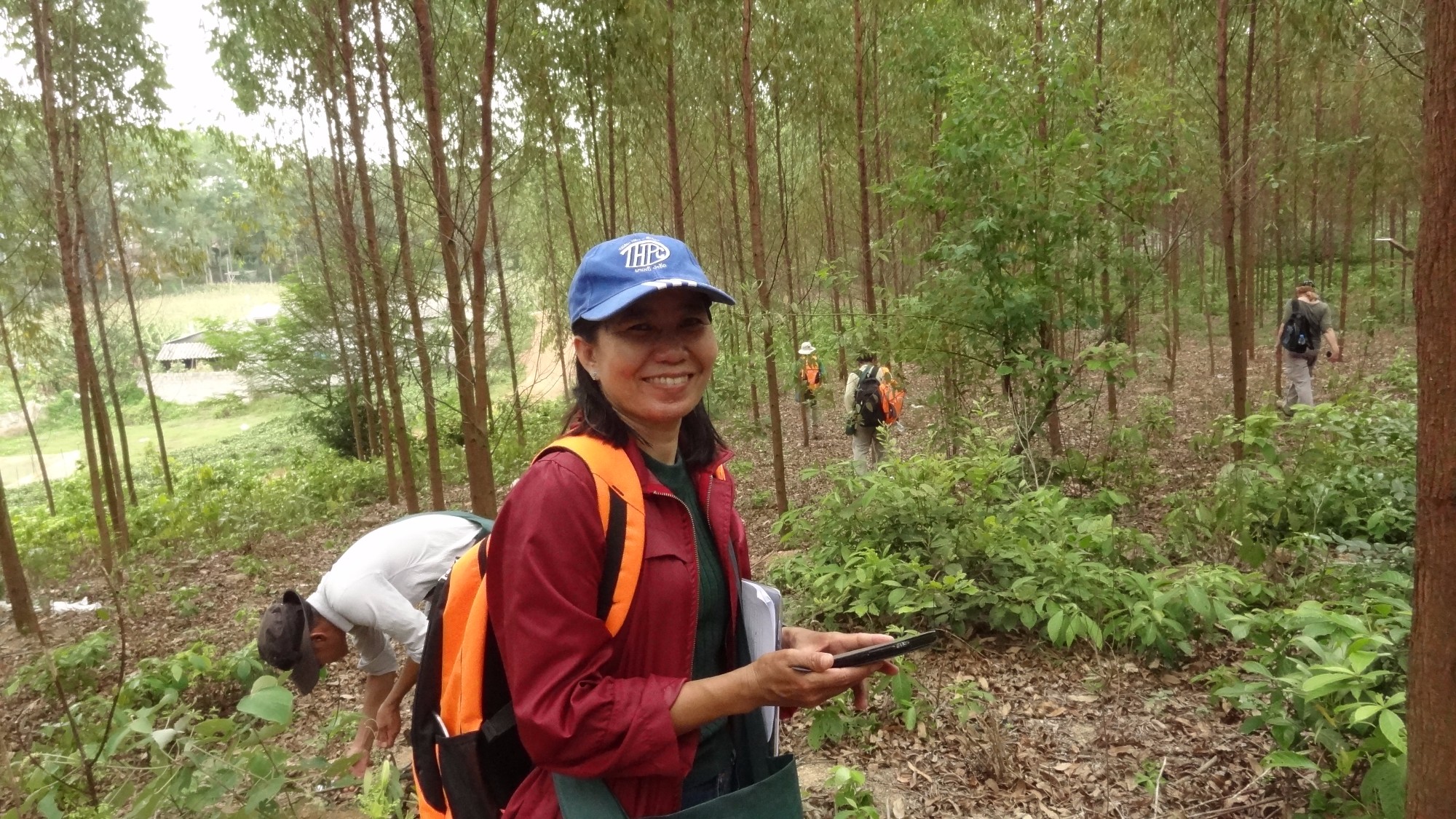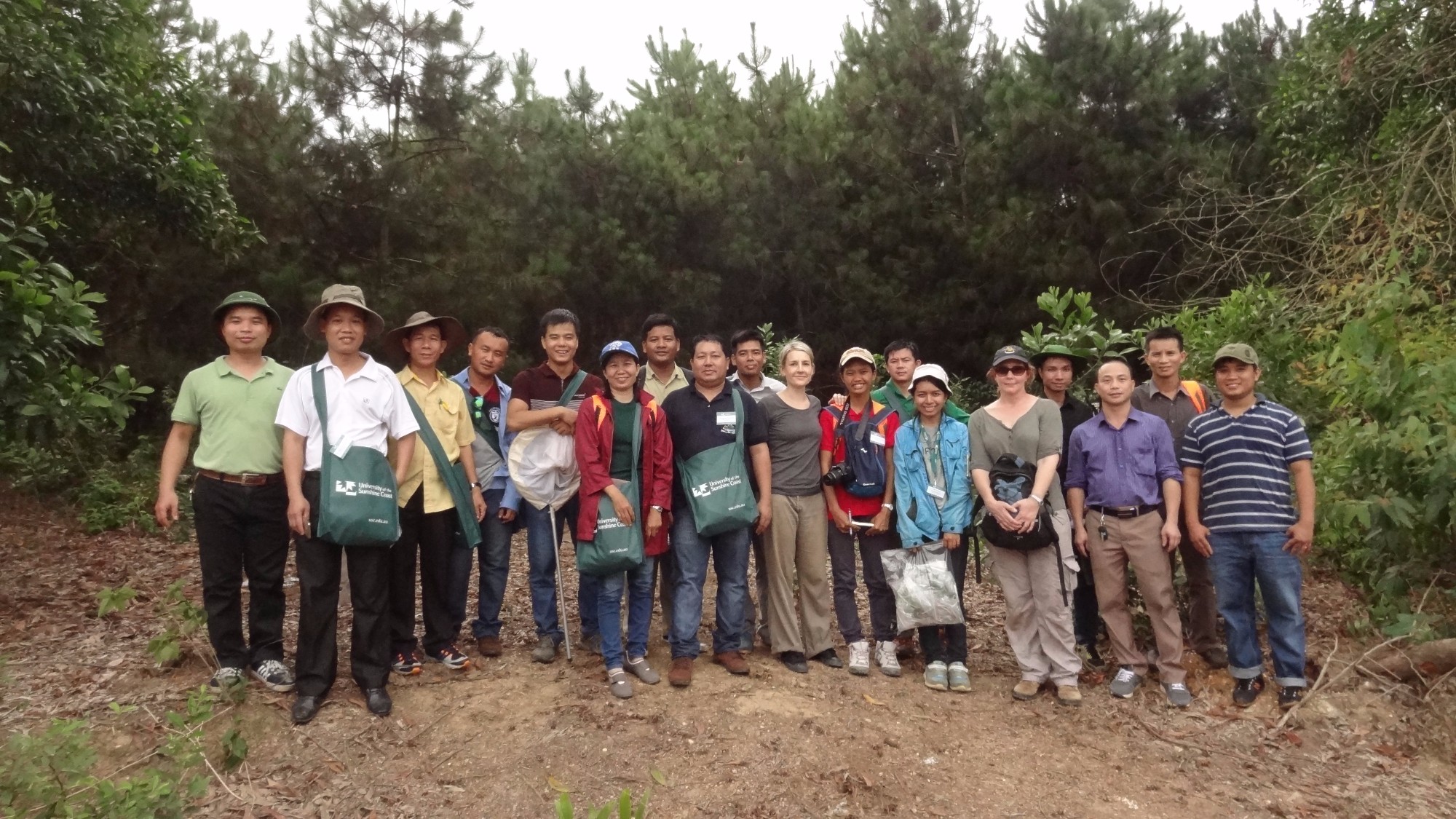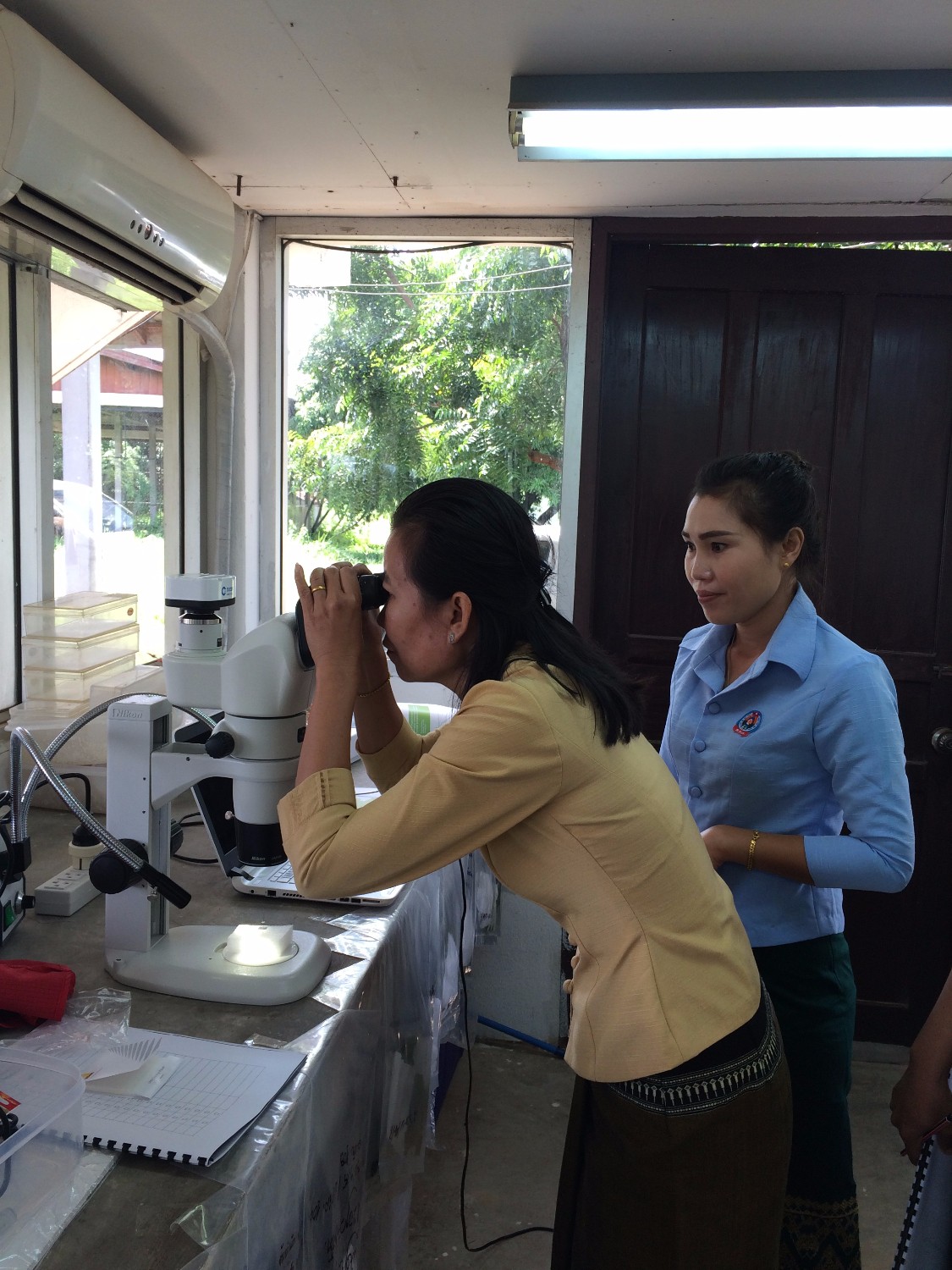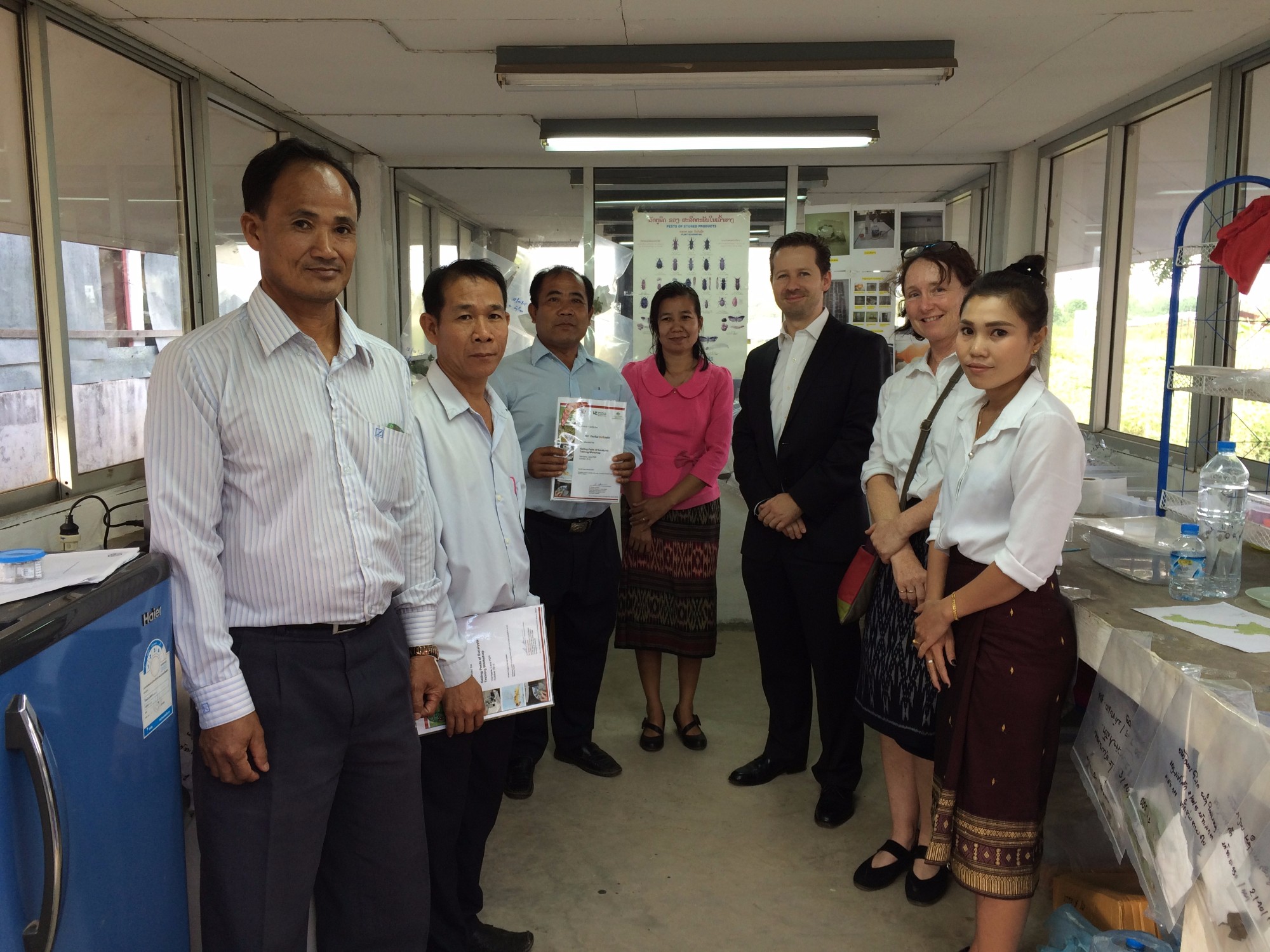Working with international collaborators in Lao PDR
By: Ms Phonevilay Sichanthongthip, Research Entomologist, National Agriculture and Forestry Institute, Vientiane, Lao PDR
I studied science at university because I wanted to know how all plants worked. I don’t come from a forestry or agricultural background, but agriculture and forestry are so important to the people of Laos, and I wanted to learn about the plant systems so that I could better understand and help. When I graduated from the National University of Laos, in Vientiane, I started work at the National Agriculture and Forestry Research Institute (NAFRI) as a Biodiversity Officer undertaking surveys of native plant species in conservation areas. Compared to agriculture there is much less research in forestry and I wanted to be a specialist in this area.

Picture 1; Phonevilay conducting forest health surveillance in Vietnam
When I began working with NAFRI I had only the basics of entomology and there were no entomologists working within forestry. In 2007 I received a scholarship to study my Masters in Entomology at Los Banos University, Philippines. Agro-forestry is very important for local people in Laos, to provide alternative incomes. So I studied intercropping cabbage in plantations and how to manage pest species of these crops. When I returned to Laos I was the first entomologist within NAFRI.
I am currently working on two international projects, with the Australian Centre for International Agricultural Research (ACIAR) and the Japan International Cooperation Agency (JICA). The JICA project is focusing on native reforestation of cleared land in Luang Prabang province. Native forests are important for local villagers as they use the native tree species for non-timber products such as rattan, bamboo, resin, honey and mushrooms. They use the product for themselves or sell them at the market. This project is good because we want to protect the forests and revegetate areas that have been cleared.

Picture 2; Collaboration! Laos, Cambodia, Thailand, Vietnam and Australia.
This is my first ACIAR project. We are developing a biological control program for a galling wasp, Leptocybe invasa, which is a pest of eucalyptus. Eucalypts are used for the domestic market to build houses, furniture and for paper. We are also working on forest health surveillance across Laos in plantations and native forests, to build checklists of pest and beneficial insects. I am very passionate about this project as it is my area of expertise, biological control, and we can help the local people and local industry to produce strong healthy trees using non-chemical methods, which is good for the environment and people’s health.

Picture 3; Training local colleagues in entymology
I have worked on many international collaboration projects with people from Japan, Australia, Germany, Vietnam, Thailand, Cambodia, Malaysia and Indonesia. I enjoy working with other countries as different countries have different experience and expertise and we can share. It is about learning as much as you teach, as collaboration is an exchange of knowledge! Research is global, and I can learn from other entomologists and researchers, and they can learn from me. I can use this new information and skills to better our projects and further train my colleagues and local forestry workers and growers.
From my experience, research works best when we work together as things that work in another country may not work here. So if we help each other we can improve forest health and production together. Importantly, I can improve my English and our collaborators can improve their Pasa Lao. This is very important as sometimes my colleagues and local people do not speak English. We researchers already share the same scientific subject and if we share the same language this allows us to pass information between us more easily. Together we can work with local villagers to strengthen sustainable land use and forest management in Laos.

Picture 4; Taxonomy training with Laos and Austrailan colleagues


